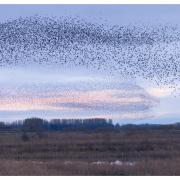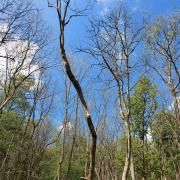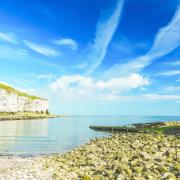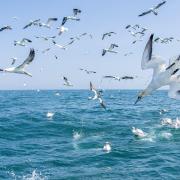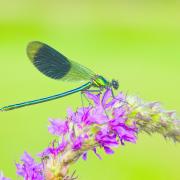Salmon returning in growing numbers to the now gin-clear River Ure could be a welcome boost to the local economy. Terry Fletcher reports
Photographs by Joan Russell
At first glance the Ure does not look like a river with problems. It’s crystal clear waters rise in the Yorkshire Dales, taking in popular beauty spots like Aysgarth Falls, and are a far cry from the dull flow of urbanised watercourses like the Aire, Calder and Dearne, which became the open sewers of the Industrial Revolution. Yet for all its beauty, the Ure, which flows down Wensleydale, passing Masham, Ripon and Boroughbridge, before joining the Swale to form the Ouse, is a shadow of its former glory.
According to the recently-formed Ure Salmon Trust, a century ago the river was one of the finest salmon streams in the country. With its gravel beds, fast-flowing water and ample supply of food, the Ure supported such a healthy population that on average 13 tonnes of salmon were caught each year and in the bumper season of 1883 more than 30 tonnes – 6,000 fish - were caught. However, by the 1940s the salmon had all but disappeared, victims not of fishing but pollution further downstream.
Salmon have a remarkable life cycle, hatching in freshwater rivers before being drawn to the deep ocean where they spend most of their life before returning to the stream of their hatching to breed. But to reach the Ure the adult fish had to swim up the Humber estuary. Chris Bilborough from the trust explained: ‘That was the heart of the problem. There was so much pollution pouring into the estuary from industrial rivers like the Aire and Calder as well as factories along the Humber itself that it killed the oxygen in the water.
Migrating fish could not get through to clean rivers like the Ure. It was so bad that for 90 per cent of the time the fish could not survive, leaving only a few short periods of less polluted water for breeding fish to return.’
In recent years, thanks to tougher environmental laws and major conservation schemes the level of pollution has dropped significantly and wild salmon, the descendants of the few fish which survived even the worst years have been returning in increasing numbers.
t has been a slow process and the trust is eager to give the salmon a hand to increase their numbers and return the Ure to its position as a major salmon river, which will not only help fishermen but also promises to give a lift to the local economy.
Chris said: ‘The business model has been proved in Scotland where they reckon that every rod caught salmon is worth about �6,000 to the local economy. That’s money spent not just on fishing but in hotels, B&Bs, pubs, restaurants and tackle shops.’
Such business is particularly welcome as much of it comes outside the summer season. Fishermen prefer February, March and April and from September to November, when traditional visitor numbers are low. The trust also believes that a fully established fishery would bring upwards of 20 new jobs on the river alone through a need for ghillies to maintain the banks and assist fishermen.
‘We know it can be done because we have watched it happen on the North Tyne. Twenty years ago the Tyne through Newcastle looked like an oil slick or worse but the river was cleaned up, the fish came back and now the North is recognised as an excellent salmon river. That can happen here too because we have all the conditions we need. The water is gin clear and the gravel beds, which fish need to spawn, are in tip top condition,’ he said.
But catching up with the North Tyne will take hard work and a lot of cash. trust estimates it needs to spend up to �100,000 a year for the next five or six years on to control erosion of the banks and to stock the river with local fish. To do this migrating fish are caught and then the eggs – up to 5,000 at a time – are stripped from the hen and transferred to a hatchery to grow large enough to be released.
‘Restocking the river like this with Ure fish is a five or six year process and we are giving it a helping hand but we need more money to do it. We already have some wonderful sponsors but more are always needed,’ said Chris.
Among the current sponsors are Lafarge Aggregates, Biker Contracts and Theakston’s Beer. Simon Theakston, executive director of the Masham brewers, said: ‘We have been making beer in Masham for more than 180 years and feel a very strong affinity with the river. It’s part of the local community and the salmon project is of huge importance both economically and ecologically and will be great news for local business and local people. We feel it’s incumbent on all of us to do what we can to support it.’
Details of how sponsors can help are available on uresalmon.co.uk











